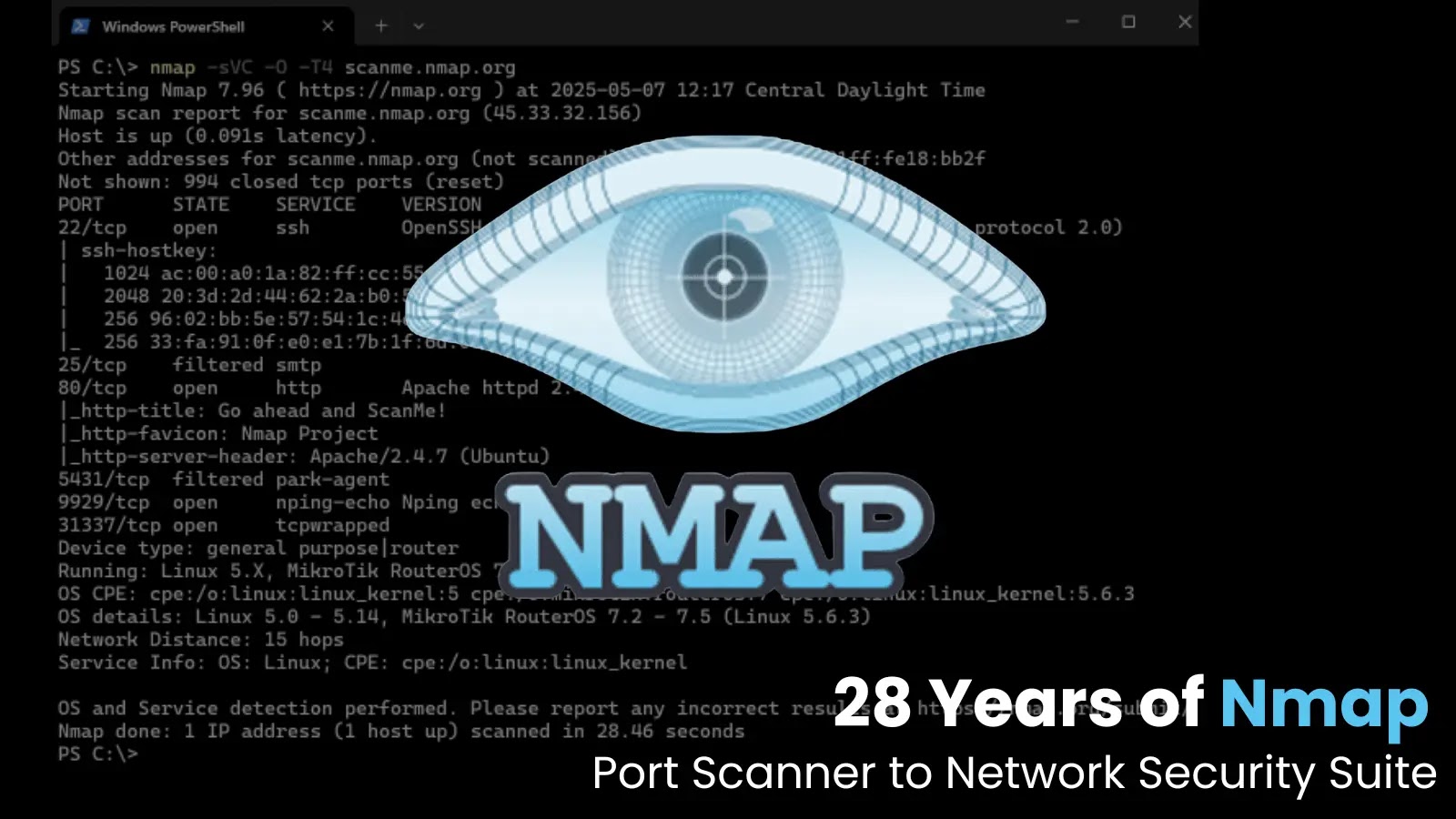
28 Years of Nmap – From Simple Port Scanner to Comprehensive Network Security Suite
28 Years of Nmap: From Humble Beginnings to Network Security Powerhouse
For nearly three decades, one name has consistently stood at the forefront of network discovery and security assessment: Nmap. What began as a modest, 2,000-line Linux-only port scanner, introduced in Phrack magazine on September 1, 1997, has evolved into a comprehensive and indispensable toolkit utilized by cybersecurity professionals worldwide. Its journey from a simple utility to a sophisticated suite perfectly encapsulates the rapid advancements and growing complexities within network security.
The Genesis: A Simple Port Scanner
Nmap’s origins were humble, focusing primarily on its core function: port scanning. This fundamental capability allowed administrators and security practitioners to identify open ports on a target system, providing crucial insights into available services and potential attack vectors. Its initial accessibility and effectiveness quickly garnered attention within the nascent cybersecurity community.
Evolution Beyond Port Scanning
The strength of Nmap lies not just in its initial design but in its continuous evolution. Over 28 years, the tool has expanded far beyond basic port detection, integrating a wealth of features that transform it into a potent network mapping and security auditing solution. Key advancements include:
- Operating System (OS) Detection: Nmap can intelligently fingerprint the operating system of a remote host, providing vital context for vulnerability assessment.
- Service and Version Detection: Beyond just identifying open ports, Nmap can determine the precise service running on a port (e.g., Apache HTTP Server, OpenSSH) and its specific version, which is critical for identifying known vulnerabilities.
- Nmap Scripting Engine (NSE): This powerful engine allows users to write and share scripts to automate a wide range of tasks, including vulnerability detection, backdoor discovery, and advanced service interaction. The NSE significantly extends Nmap’s capabilities, making it highly customizable and versatile.
- Packet Crafting: Nmap offers sophisticated packet crafting capabilities, enabling users to send custom packets for various network analysis and testing purposes.
- Host Discovery: Techniques like ARP ping, ICMP echo requests, and TCP/UDP port pings allow Nmap to efficiently identify active hosts on a network.
Nmap Today: A Comprehensive Security Suite
Today, Nmap is not merely a “port scanner” but a comprehensive network security suite. Its widespread adoption across diverse sectors, from penetration testing and vulnerability management to network inventory and incident response, underscores its enduring relevance. Its ability to provide detailed network topography, identify potential weaknesses, and integrate with other security tools makes it an essential component of any security analyst’s toolkit.
Future of Network Security and Nmap’s Enduring Role
As networks become more distributed and complex, and as threat landscapes continually evolve, tools like Nmap remain vital. Its open-source nature fosters continuous development and adaptation, ensuring it stays at the cutting edge of network discovery. The community contributions and robust development team behind Nmap guarantee its continued relevance and evolution in the face of emerging challenges.
Key Takeaways
- Nmap launched on September 1, 1997, as a simple port scanner.
- It has evolved over 28 years into a comprehensive network security suite.
- Key features include OS and version detection, the Nmap Scripting Engine (NSE), and advanced host discovery.
- Nmap remains an indispensable tool for network professionals, security analysts, and developers for its versatility and power.





